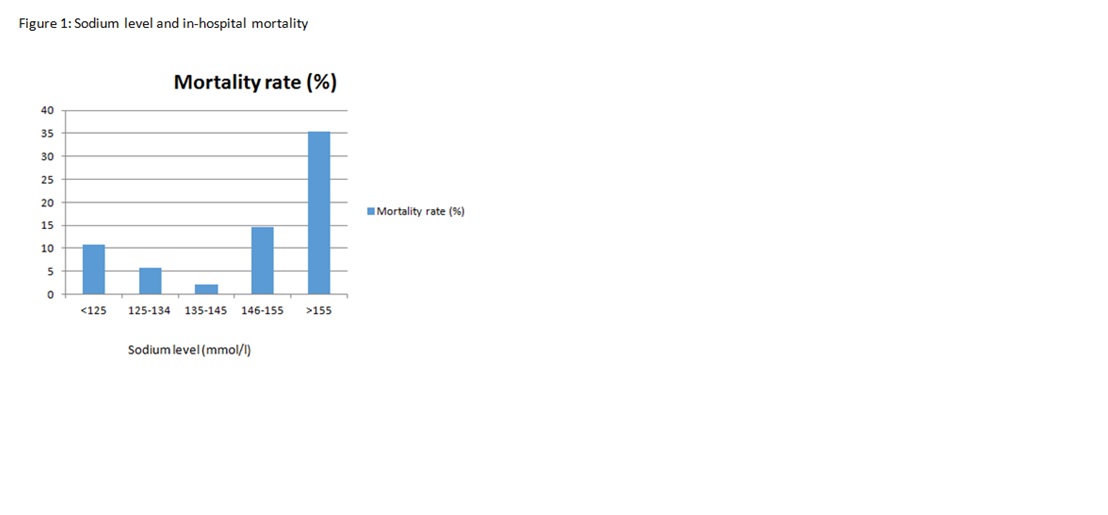Poster Presentation The Joint Annual Scientific Meetings of the Endocrine Society of Australia and the Society for Reproductive Biology 2017
Sodium level on admission and in-hospital mortality (#191)
Background
Previous studies have found an increase in mortality in patients with worsening degrees of hyponatraemia. There is limited evidence on the impact of hyponatraemia on other hospital outcomes such as length of stay and intensive care unit (ICU) admission.
Aims
This study aims to investigate the relationship between the admission sodium level and patient outcomes including mortality, length of stay (LOS) and admission to ICU.
Methods
All patients admitted to Westmead hospital in the year 2015 who had a blood sodium level measured on admission were included. Admission sodium levels and related blood results were obtained. Data linkage was performed for the above mentioned hospital outcomes. Analyses for any associations between admission sodium level and primary hospital outcomes (in-hospital mortality) and secondary hospital outcomes (LOS and admission to ICU) were performed.
Results and Discussion
A total of 6447 patient admissions had an admission blood sodium level performed. Of these, mean age was 55.8 years. 49.3% were male. 16.8% had chronic kidney disease (CKD) stage 3-5. Serum sodium ranged from 110mmol/l to 175mmol/l (mean 138.0mmol/l).
The primary outcome of in-hospital mortality occurred in 190 patients. LOS ranged from 1 to 383 days (mean 7.6 days). 15.2% of patient admissions involved an admission to ICU. Length of stay in ICU ranged from 1 to 1683 hours.
An abnormal sodium level (Na <135mmol/l or >145mmol/l) (Figure 1), age, and CKD 3-5 were found to be predictors of in-hospital mortality. Multivariate analysis, adjusting for age and CKD, showed that both hyponatraemia (Na <135mmol/l), and hypernatraemia (Na >145mmol/l) were independent This indicates that an abnormal serum sodium level is a strong marker of poor outcomes in acute illness.
